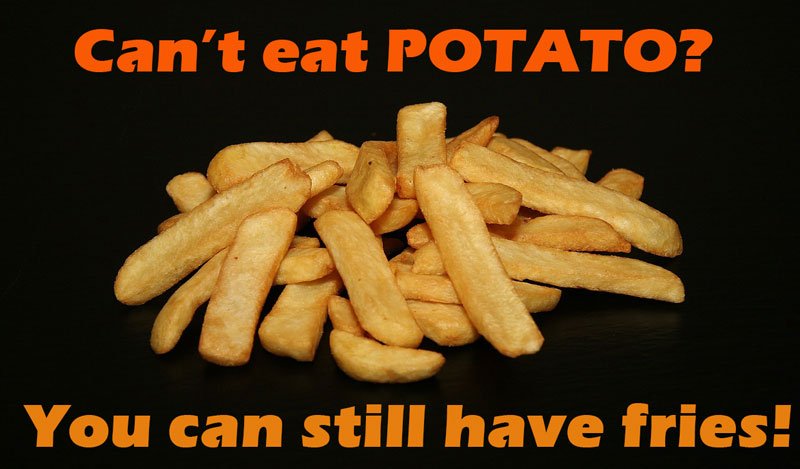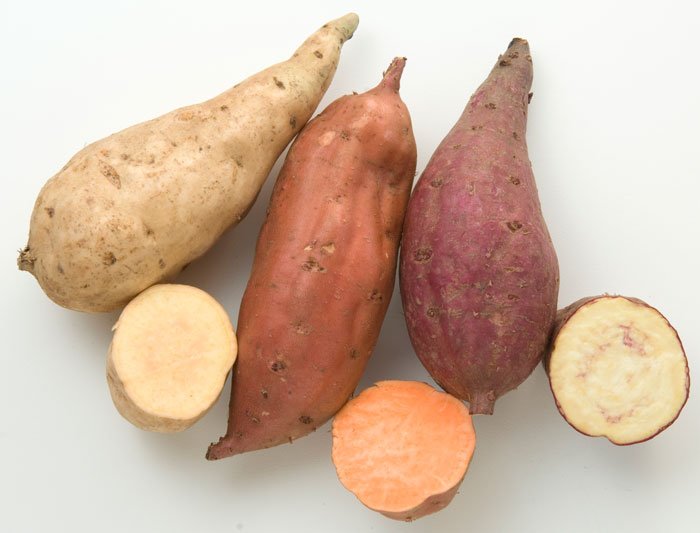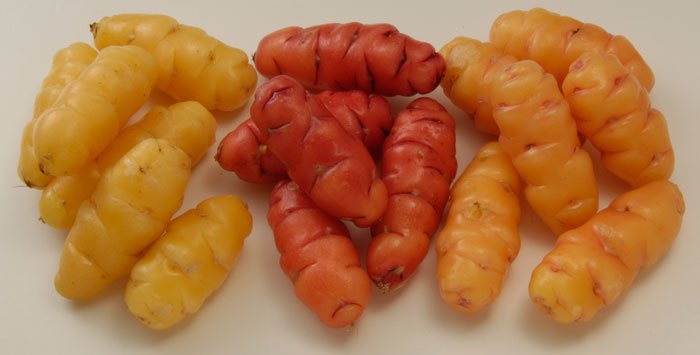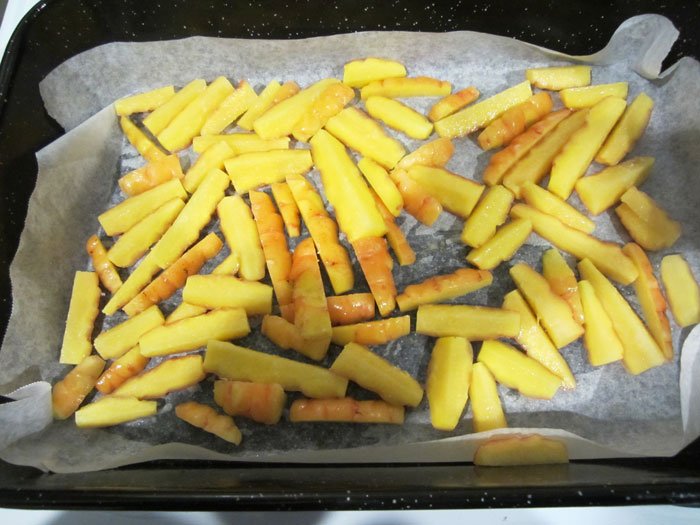We don’t go well on potatoes in our house. Unless you call excruciating pain “going well”. But we love fries, or chips as we call them in New Zealand. After all, who doesn’t?
So I make “chips” out of a variety of different vegetables. Really, they’re just roast veges, but cut them in fingers and they can be called chips. Or “chups” if you have a strong kiwi accent.

If you’re doing GAPS, SCD or any other starch-free diet, pumpkin is the closest you’re going to get, especially butternut. I’ve experimented with other vegetables like carrot, zucchini, daikon radish and even eggplant. @sift666 likes zucchini chips the best, especially if they get nice and caramelised, but usually they come out more soggy than chip like.
More chip like, which would be Paleo or whole food, but not starch free, are kumara or yam chips. But NZ yams are completely different than US yams, and if you’re outside NZ, you may not have even heard of kumara (sometimes spelt kumera). So first we need to distinguish between different types of what can loosely be grouped together as sweet potatoes.
First let’s look at the botanical groupings.
They fall into three different families:
• These are all sweet potatoes from the Morning glory family (Ipomoea batatas), but with different characteristics. Some are dry fleshed and some are moist fleshed.
o The vegetables commonly called sweet potatoes in the US. These come with different coloured flesh (white, yellow and even purple) and are usually dry fleshed.
o The vegetable called a yam (or sweet potato yam) in the US. These are actually moist fleshed sweet potatoes and not true yams at all.
o The different varieties of NZ kumara are all sweet potatoes. Some are dry and some moist fleshed.
• The vegetable called a yam in NZ and Australia is also not a true yam. It comes from the South American Andes and is also called an oca (Oxalis tuberosa). As its name suggests, it contains oxalates, which are not neutralised when cooked. The traditional method of reducing oxalates is to leave them out in the sun for several days, after which they can be eaten raw or cooked.
• A true yam is of the Dioscorea family and these are not widely available, at least in NZ. The wild yam that is used for balancing female hormones is also in this family.
If you have an NZ recipe and want to convert it to US types
This photo from the website http://www.vegetables.co.nz/ shows gold, orange and red kumara.

• Red kumara (or Owairaka Red) is the most common. It has red skin, creamy white flesh, and is quite dry. From what I can tell it’s Closest US equivalent would be the Sweet Potatos: White or yellow fleshed; Jersey; or Kotobuki Japanese
• Gold kumera (or Toka Toka) has light golden skin and flesh. It’s sweeter than red, fairly dry. Possibly most like a US garnet yam.
• Orange kumera (or Beauregard) has a dark orange skin, orange flesh. It’s much moister with a sweet flavour. Possibly most like US Beauregard or Jewel yam.
This photo from the same website shows the three different yams types available here. In the US, look for Oca, NZ yam or tuberous shamrock.

If you have a US recipe and want to convert to NZ types:
I got my info about US sweet potatoes and yams mostly from this website. I’ve eaten sweet potato fries, but that’s my only experience with US types. So this is what I would try, but I am largely guessing! Please feel free to add your comments below if you can clarify further.
• Sweet potato seems to mean a dry-fleshed sweet potato, so try a red or gold kumera. For sweet potato fries, although the colour is different, I think the gold would be best.
• If the recipe says yam, or yam-sweet potato, or sweet potato yam, this seems to mean a moist fleshed variety – I’d try an orange (Beauregard) kumera
Now, finally, on to the recipe!
I used apricot yams, but other colours come out just the same. If you can’t find NZ yams, you can make the same recipe with sweet potatoes, you’ll just have to cut each one into more pieces.
I don’t usually use baking paper when I’m roasting veges, but yams have a habit of sticking, so this time, I lined my roasting dish with baking paper.
Then I tossed in a generous dollop of pork lard and put it into the oven (set to 175C / 350F) for the fat to melt. Duck fat, chicken fat, or tallow would all work fine as well. I like to use animal fats for roasting as they are safe to cook at higher temperatures. But if you don’t use animal fats, you can use coconut oil, which is a safe fat for heating, but will give a bit of a coconut flavour. Olive oil is ok, but you will lose some of the nutritional value of the oil.
While the fat was melting, I chopped the ends off the yams, and cut off any manky bits. Then I cut them into quarters lengthways. Into the roasting pan with a good sprinkling of sea salt, and then toss the veges, fat and salt together well. (manky = rotten or nasty looking)

Cook for about an hour till they are soft when poked with a sharp knife. Half way through, turn them and mix them round again with a large spatula.
We had them with steamed broccoli and mince patties, but you can use them anywhere you’d use chips (fries).

Thanks for reading
Photos by myself or from Pixabay, unless otherwise stated.
Follow me for more health, nutrition, food, lifestyle and recipe posts.

Contact me in SteemitChat to ask about one on one nutritional coaching or EFT (Emotional Freedom Technique) sessions by Skype. (But don’t just say Hello. Tell me straight away why you’re messaging, without waiting for me to say Hello back.) Steem, other altcoins or Paypal accepted.
Some of my previous RECIPES AND KITCHEN TIPS:
BREAKFASTS –
• Choc Blackcurrant Smoothie
• Feijoa Pear Smoothie
• Cashew Porridge
• Other Breakfast ideas
BREADS & BAKING -
• Grain free, dairy free Pumpkin & Cashew Bread
• Grain Free Banana Cashew muffins
• Carrot Almond bread
• Vegetable muffins
• Grain free cheese muffins
• Happy birthday to me! with birthday cake recipe…
• Grain Free Apple Cashew Walnut Muffins
• Carrot Cashew Blender Bread
• Stove top grain free bread
• Apple Walnut Coconut Flour muffins
SOUPS & DINNERS –
• Warming winter soup
• Paleo Cottage Pie
• I judged the Steemit Culinary Challenge: Paleo
SNACKS & FINGER FOODS –
• Healthy Chocolate & Fudge
• Jerky with vegetables
• Choco-mallow protein bars
• Grain free Fruit & Nut bar
• Finger food for a gathering
• Real food ideas for snacks and road trips
FESTIVE –
• Festive smoothies for Xmas morning ~
• Orange Cranberry Xmas Breakfast Muffins ~
• Crisp & crunchy Xmas cheese stars
• Best ever (and easiest) Christmas cake
• Xmas menu ideas
• Planning your holiday eating to be a bit more balanced
• Paleo Easter Buns (coconut-almond flours, gluten and starch free, lowish carb)
• Even yummier Paleo Easter Buns
KITCHEN TIPS & MENUS –
• Tip for storing ginger & tumeric ~
• Equipment for the real food kitchen
For MORE RECIPES and my 15 step Whole Food cooking course, see my recipe website.
